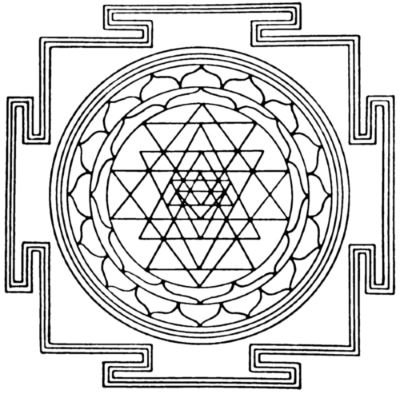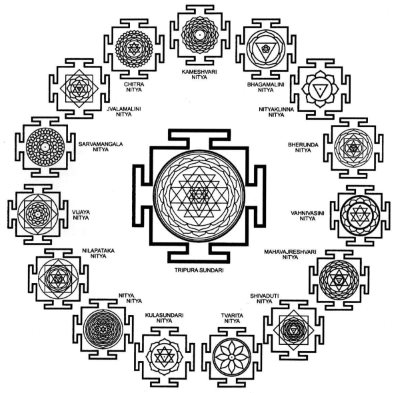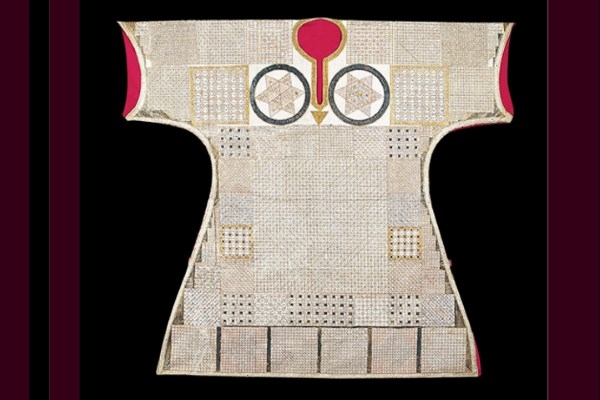By: Senay Yangel
I have conducted many studies on the importance that the Ottoman Sultans placed on astrology. My research into and admiration for the Münecimbashi system of astrology that spanned from the 14th century up to the late 18th century drew my attention to a correlation between Ottoman Talismanic Shirts and the Yantras of Vedic Astrology.
At a critical stage in my research, I realized the same method of calculation was used in constructing both the Talismanic Shirts and the Yantras.
This prompted me to examine the Talismanic Shirts in greater detail. I was able to see examples of these shirts at the Topkapi Palace Museum. I also did research using a book by Art Historian Asst. Prof. Hülya Tezcan on Talismanic Shirts, along with other sources.
In the Turkish-Islamic system, symbols were derived from numerological calculations based the ABCED system of alphabetic numeration (Gematria). The use of these symbols shows a similar approach as with the Yantras. The symbols are meant to counter negative planetary energies that repeatedly project the same circumstances in our lives due to challenging configurations in our birth chart.
One intriguing discovery was that the the astrologers (Muneceimbashi) of the Ottoman Sultans prepared Talismanic Shirts according to a tradition that they believed reached back as far as 2852 B.C.
Chinese mythology states that one of the earliest types of yantras was created by the Chinese Emperor Fu His in the 2800s B.C. in the form of Pa Kua 8 trigrams. These later become the basis for the philosophy of the Book of Changes (the iChing), the earliest version of which dates from the 8th century B.C. When these trigrams pass through each other they make up the foundations of the magical power that provides protection against the positive forces of nature. The use of trigrams spread throughout Asia and into India, Pakistan and Afghanistan. Below are some examples. The primary symbol is the Sri Yantra, which has nine interlocking triangles that form 43 smaller triangles.


Even before they converted to Islam, the Turks made use of Talismanic Shirts. The ancient Dede Korkut stories speak of protective shirts that are immune to lead and sword cuts or confer happiness.
Talismanic Shirts are also mentioned in the Koran. An example is in ayah (verse) 93 of the 12th chapter of the Yusuf (Joseph) Sura. When the prophet Joseph is Vizier of Egypt, there is a shirt that his fathers and brothers send him as a present. In ayah (verse) 96 of the 12th chapter, when the prophet Joseph rubbed this shirt on his face, the weeping of prolonged separation stopped and he opened his eyes.
Based on my research, I believe that during the of Turkish domination in India (from the 12th to 16th Centuries), this special teaching was developed as Hindu-Islamic cultural product and carried into the Ottoman period to become part of the administration of the state. It may have also occurred as early as the Turkish forays into the Rajput kingdoms during the 8th century.
The four archangels, Michael, Gabriel, Rafael and Azrael, the 99 names of Allah (ʾasmāʾ allāh al-ḥusnā), and certain ayahs from the Koran frequently make their presence on the Ottoman shirts. In addition, the phase of the moon, astrologically propitious times and many other astrological symbols are often used on these shirts. The shirts were also prepared according to the date and time of birth of the Sultan in question.
My studies on this matter continue.
Astrologer Senay YANGEL
Images Left to Right:
(1 & 2) 16th Century Ottoman Shirt back and front; (3) Another Ottoman Talismanic Shirt c. 1583 A.D.
(4) Talisman Shirt from Myanmar, mid-20th Century; (5) Talismanic Shirt from North India with verses from the Koran–15th or early 16th Century; (6) Another Turkish Talimanic Shirt from the Whitworth Gallery



